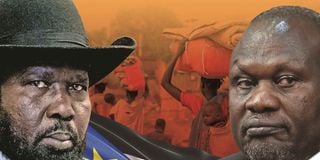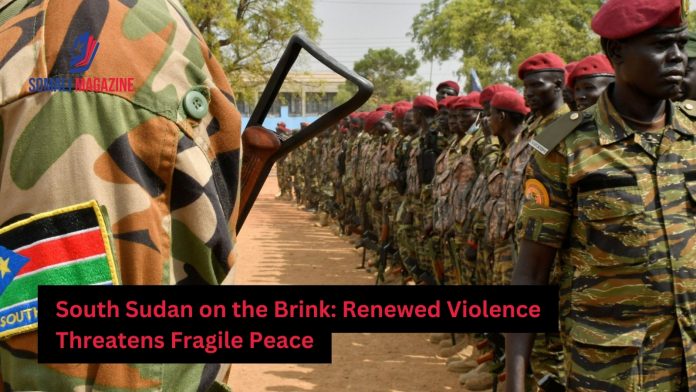Facebook Twitter Instagram Somali Magazine - People's Magazine
South Sudan is grappling with a surge in violence that threatens to unravel the fragile peace established by the 2018 Revitalized Agreement on the Resolution of the Conflict in South Sudan (R-ARCSS). Recent clashes in Upper Nile State, particularly in Nasir County, have raised fears of a return to full-scale civil war in the world’s youngest nation. The escalating conflict, fueled by deep-seated ethnic divisions and political rivalries, has already displaced tens of thousands and drawn international concern.
The violence intensified in early March 2025 when the White Army, a Nuer community militia, launched attacks against units of the South Sudan People’s Defence Forces (SSPDF) in Nasir. The militia, which claims to act in defense of the Nuer community, has a long history of involvement in South Sudan’s conflicts. The clashes have resulted in nearly 50 deaths and numerous injuries, with the White Army asserting that its actions were in self-defense. The government’s response, including aerial bombardments supported by Ugandan forces, has further inflamed tensions.
The roots of the conflict can be traced back to historical grievances between the Nuer and Dinka communities, exacerbated by the 1991 split within the Sudan People’s Liberation Movement (SPLM). This division led to years of infighting, with the White Army emerging as a key player in the Nuer community’s defense. Despite efforts to integrate various factions into a unified national military, the White Army has remained largely independent, complicating efforts to achieve lasting peace.
The current violence has been compounded by political instability in Juba, where tensions between President Salva Kiir and First Vice President Riek Machar continue to undermine the unity government. The arrests of opposition figures and the dismissal of key officials have added to the volatility, with opposition groups accusing the government of using heavy-handed tactics to suppress dissent. The involvement of Ugandan forces, initially denied by officials, has also sparked controversy, with critics questioning the legality and implications of foreign intervention.
The humanitarian impact of the conflict has been devastating. The United Nations estimates that over 50,000 people have been displaced since February, with many seeking refuge in neighboring Ethiopia. Humanitarian operations have been severely disrupted, with aid workers evacuated and critical infrastructure, including cholera treatment units, forced to shut down. The violence has also exacerbated food insecurity, with millions already facing acute hunger due to economic instability and climate-related challenges.

International actors have expressed alarm over the deteriorating situation. The United Nations Mission in South Sudan (UNMISS) has called for an immediate cessation of hostilities and urged all parties to prioritize dialogue. The African Union and the Intergovernmental Authority on Development (IGAD) have also emphasized the need for a renewed commitment to the peace agreement, warning that the country risks sliding back into chaos.
Analysts have highlighted the importance of addressing the root causes of the conflict, including ethnic divisions, political exclusion, and economic disparities. They argue that sustainable peace will require not only military solutions but also comprehensive reforms to promote inclusivity and accountability. The establishment of transitional justice mechanisms, such as the Truth Commission and the Hybrid Court, remains critical to breaking the cycle of violence and fostering reconciliation.
As South Sudan navigates this precarious period, the focus remains on preventing further escalation and ensuring the protection of civilians. The international community’s support will be crucial in bolstering peace efforts and addressing the humanitarian crisis. For the people of South Sudan, the hope for a stable and prosperous future hinges on the ability of their leaders to rise above divisions and prioritize the nation’s collective well-being.

